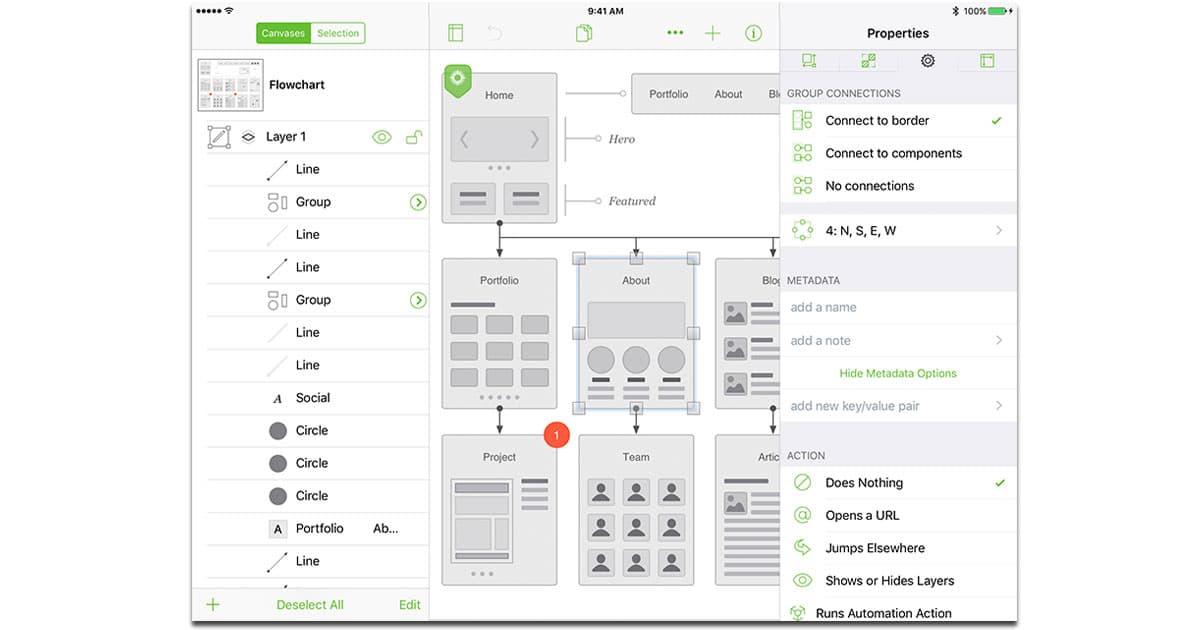

Ideally the systems architecture is done on paper with sticky notes that can be moved around at will by multiple users. The systems architecture is a hierarchy diagram of the flow of the website or app-what the relationship between the pages of the system will be. A systems architecture diagram is sometimes also called a site map. and a systems architecture diagram A diagram that shows the organization of a website or app. It is good to frequently interact with the end user and show them screen mockups Non-functioning pages of a website or app that are generated in a drawing program such as Photoshop, Omnigraffle, or even PowerPoint.
#Omnigraffle for mac grid dimensions code#
First, because that is where IS professionals tend to spend most of their time and second because it is much easier to make changes to a system when in the planning stages, than after code has already been generated. However we will focus most heavily on the first three stages for two reasons. In this course we will cover all five stages. Finally, the system goes live for the end users as it is implemented in the business setting. Then the system is developed (programmed) and tested. The next stage is to design a solution (no programming yet). Then specify the requirements that a solution should embody. The SDLC is to a large extent common sense spelled out in stages. The life cycle proceeds through the following stages: an analysis of the current state, development of requirements, design of a solution, development from the design and finally to implementation or roll out of the solution.

Information systems are designed using the systems development life cycle (SDLC) A method for designing information systems. These include estimating costs, time schedules, and so forth. Every information systems project has quantitative dimensions associated with project management.
#Omnigraffle for mac grid dimensions how to#
describes how to best represent information-especially quantitative information-to communicate clearly and truthfully. Existing colors, fonts, and logos are all a part of the brand for which the system is being created.Īnalytical Design Describes how best to represent information-especially quantitative information-so that it communicates clearly and truthfully. Designs also need to fit with the overall brand of the client. Employing graphic design principles helps ensure that the system will have visual appeal. However, a usable system could be bland and uninteresting. Usable systems typically adhere to at least some graphic design rules. There is obviously some overlap here with usability. refers to the visual appeal and organization of the user interface. Graphic design Describes the visual appeal and organization of the user interface. Following conventions tremendously increases the potential acceptance of your website or app. has one of the most usable online systems because they follow established conventions. Usability theory provides rules of thumb (heuristics) that document best practice conventions for designing a user interface. A more usable system also leaves less room for error. The easier the system is to navigate, the less time a user will need to spend learning to use the system. describes how easy the system is to navigate. Usability Describes how easy the system is to use and navigate-especially for novice users. However, we want to be metaphorically better than fast food in our designs. Similarly, fast food meets the need for feeding one’s hunger. And yet its design is in other ways lacking. The vilified hospital system described earlier meets the business need of registering patients. After all if the design does not satisfy the business need, then what’s the point? However, satisfying the business need is really a baseline standard.

Problems must be analyzed and requirements documented before solutions are designed, developed, and implemented. When IS professionals speak of design, they are referring to business processes.

Whenever possible we will contrast good and bad designs.ĭifferent people use the word design in different contexts. We will look at design from a number of different perspectives. But what makes a good design? A number of disciplines weigh in on this topic. The key to successful information systems is good design.


 0 kommentar(er)
0 kommentar(er)
